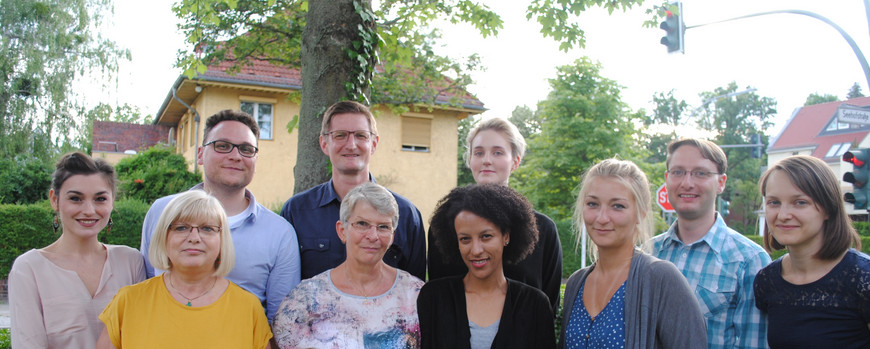Overview
The chair "Development and Variation of the English Language" comprises "Diachronic Linguistics of English" and "Sociolinguistics of English", two areas with manifold interconnections. The former is concerned with the origins and development of the English language over the past 1600 years. It begins with the emigration of Angles, Jutes, Saxons and Frisians from the Continent and their conquest and settlement of the British Isles after around AD 400-450. Only on English soil did a language develop that can be referred to as 'English'. The following eras of the development of English are generally distinguished, but the exact boundaries for every period are hard to define:
- Old English, ca. AD 500 – 1150
- Middle English, ca. 1150 – 1500
- Early Modern English, ca. 1500 – 1750
- Late Modern English, ca. 1750 – 1950
- Present Day English, ca. 1950 – today
Due to the colonial expansion of England (beginning around AD 1600), the emergence of independent varieties of English – in a broad sense referred to as World Englishes – can be observed from the Early Modern English period onwards. These varieties include Irish; Scottish; Welsh; North American; Australian; New Zealand; East, West and South(ern) African; Indian; South East Asian and West Indian (Caribbean) English. To a varying degree, these Englishes have developed a national or regional identity and reached concomitant standardization.
Research at the chair “Development and Variation of the English Language” currently focuses on the following key areas:
- Grammaticalization and lexicalization
- Language contact and linguistic change
- Verbal categories in the history of English
- Cognitive-sociolinguistic analyses of the varieties of English
- Intercultural communication in English
- Language and education policy in the former British colonial territories
News and events
The chair is offering a Field Trip to Bali in the upcoming winter term 2025-26.

